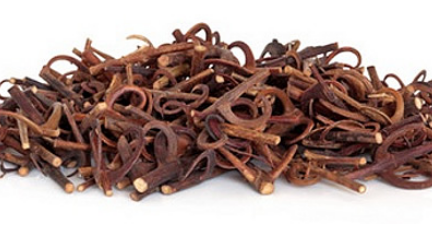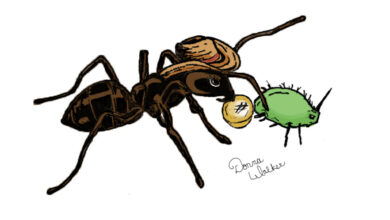To raise the defenses, reduce inflammation and delay aging: Cat’s Claw

Medicinal plants have been the basis of medicine for all civilizations on Earth for thousands of years. The Phytotherapy , which is the use of medicinal plants to preserve and restore health to disease, is as old as man himself.
And perhaps cat’s claw is primarily known to be related to its potential anticancer effect. And there are several investigations that study this medicinal effect as it is a very important field of knowledge.
In this article we tell you what cat’s claw is, what its medicinal action is and its therapeutic uses, how it is taken and its possible contraindications.
Also at the end of the post you can see a video in which I summarize the properties and uses of this medicinal plant.
What is cat’s claw?
The cat ‘s claw , Uncaria tomentosa , is a medicinal plant from the Amazon that has formed and remains part of the traditional medicine of the native people due to its extraordinary benefits and medicinal properties . In some areas of Peru, cat’s claw is considered a sacred plant .
Cat’s claw is a climbing liana with small flowers that grow in clusters
This plant is also known by other popular names such as huasca, Paraguayan, saventaro, yellow garabato or hawk’s claw , however, when you go to buy it, always look at the scientific name because popular names vary from one area to another and it is not reliable. .
What are the uses of cat’s claw? What is cat’s claw good for?
This medicinal plant has several health benefits that we will see below. The bark and roots are mainly used for medicinal purposes and the leaves to a lesser extent.
Cat’s claw is consumed as an infusion, below I will tell you how to prepare it.
Medicinal properties of cat’s claw
This plant is rich in active principles such as alkaloids (about 17 are known, among them indoles and oxindoles), quinovic acid, phytosterols, polyphenols (tannins and flavonoids).
Cat’s claw has action:
- anti-inflammatory
- antimutagenic
- cytoprotective
- antihypertensive
- antiviral
- cardiovascular protector
- antioxidant
- immunomodulatory
- painkiller
- diuretic.
- anti-aging
Benefits of consuming cat’s claw, Uncaria tomentosa
 The main and most powerful therapeutic use of this plant is focused on improving the immune system by regulating its functioning, being studied in diseases such as cancer (it induces the death of cancer cells)
The main and most powerful therapeutic use of this plant is focused on improving the immune system by regulating its functioning, being studied in diseases such as cancer (it induces the death of cancer cells)
However, we will see that the therapeutic use of cat’s claw is very broad.
This medicinal plant is indicated to improve digestive problems.
It is used to fight viral infections, even chronic ones.
Improves cases of general weakness by accelerating recovery
One of the traditional medicinal uses of cat’s claw is to regulate the menstrual cycle.
In high doses, this plant has a contraceptive effect (in high doses)
Could prevent tumor cell proliferation
It is beneficial in cases of gout or high uric acid
Helps prevent radiation damage
It has the potential to help prevent cerebral ischemia.
Cat’s claw is indicated for osteoarthritis, arthritis, osteoarthritis and rheumatoid arthritis
Reduces hemorrhoids
Cat’s claw is beneficial in diabetes because it improves insulin sensitivity.
It is very effective in relieving chronic inflammations
It can be useful to help prevent and improve cases of prostatitis
It is useful in case of diarrhea
Cat’s claw is used successfully for cirrhosis
Helps delay the aging of our body
Its use is recommended in those cases in which the defenses are low
Stimulates and strengthens the function of our immune system
It’s no wonder that cat’s claw is considered a sacred plant, right?
How to use cat’s claw
Cat’s claw can be found dry or fresh and is prepared as an infusion, although it can also be found in tincture, ground, capsules, etc.
Mainly the branches of the plant are used when they are dry.
- An infusion is prepared by adding a teaspoon (4 grams) in a cup and filling it with boiling water.
- Cover and let stand between 4 and 8 minutes. The longer it is resting, the more intense its flavor will be.
- Filter and drink little by little when the infusion cools to room temperature.
You can sweeten it if you want.
Preparations made from cat’s claw root are also marketed.
Contraindications of cat’s claw
The use of this plant is contraindicated during pregnancy and lactation.
It should also be avoided in children under 12 years of age.
Medicinal plants can interact with medications. If you are under drug treatment, consult your pharmacist or doctor before taking medicinal plants.
It should not be used for more than 2 weeks in a row. After 14 days, you should take a week off before taking it again.
These are general recommendations, if you want to know if this plant can be beneficial in your particular case, consult a professional who knows your medical history and your needs and can direct you a personalized treatment.
.
.
Consulted bibliography
- https://www.ncbi.nlm.nih.gov/pubmed/17017852
- https://www.ncbi.nlm.nih.gov/pubmed/11804547
- http://archive.foundationalmedicinereview.com/publications/6/6/567.pdf
- https://www.ncbi.nlm.nih.gov/pubmed/30030460
- https://www.elsevier.es/es-revista-offarm-4-articulo-una-gato-13095508


![Photo of Ardisia: [Cultivation, Irrigation, Care, Pests and Diseases]](https://www.complete-gardening.com/wp-content/uploads/2022/08/ardisia-cultivation-irrigation-care-pests-and-diseases-390x220.jpg)
